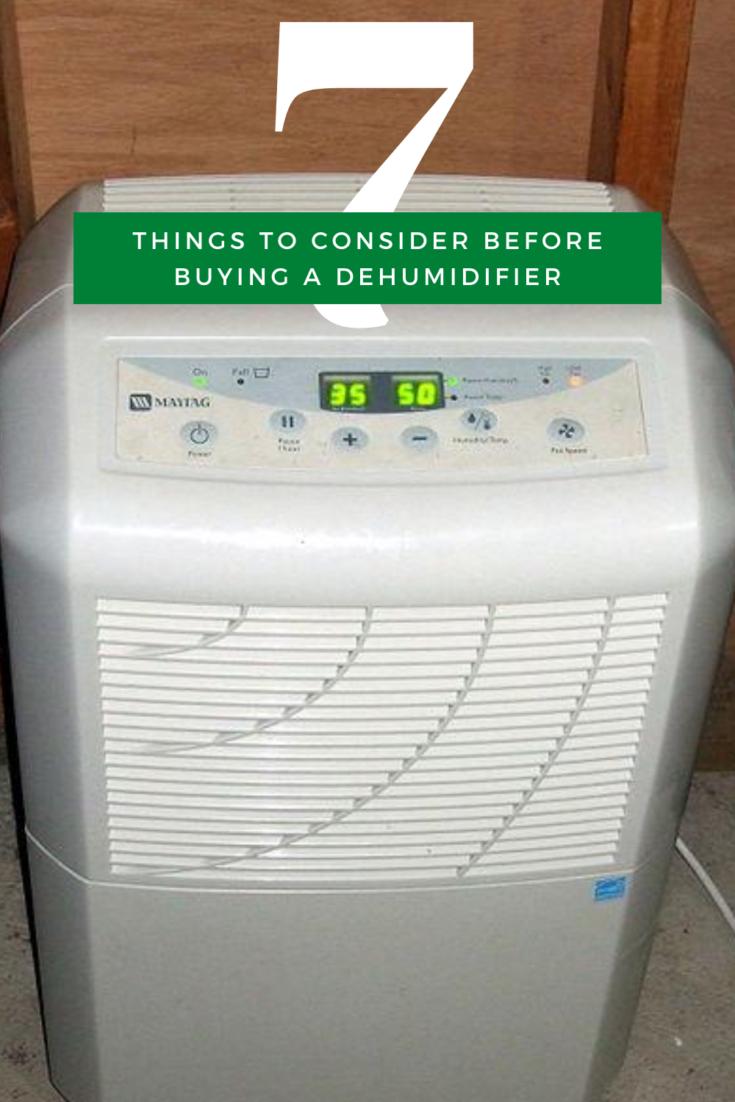Humidity levels shoot up as soon as summer arrives. The high humidity causes many health complications for people who suffer from chronic respiratory diseases. By attracting black mold, it can further aggravate those conditions.
Buying a dehumidifier is the best solution for dealing with high humidity. It reduces the humidity level by absorbing moisture from the air, allowing you to breathe comfortably.
Whether you are buying a dehumidifier for the first time or replacing an old one, we will cover a few factors you should consider before buying.
1. Clarify Your Needs
Before examining the technical specifications, it is essential to outline your reasons for buying a dehumidifier. Do you want a unit for some rooms or your entire house? Would you use it only in the summer or year-round? How smart do you want it to be? What issues do you want the dehumidifier unit to combat?
Answer all of these questions as you read the buying guide to choose the right product for your home.
2. Deciding the Type of Dehumidifier
Choosing the type of dehumidifier should come first, and it should be based on the season when the unit will be operated.
There are three types of dehumidifiers on the market: thermo-electric, refrigerant, and desiccant. Thermo-electric units aren't very common. The desiccants dehumidifiers are preferred all year long, while the refrigerant models do not perform well in very low temperatures. When it comes to operating the unit only in summers, the refrigerant types perform much faster and use less energy.
So if you plan on buying a dehumidifier to use all year round, opt for a desiccant model. If you need it only for the summers, go for a refrigerant type.
MAKEUSEOF VIDEO OF THE DAY3. Deciding the Best Size of Dehumidifier
To choose the right-sized dehumidifier for your home, you must compare three elements: capacity, moisture level, and room size.

Capacity refers to how much moisture the unit can remove from the air every 24 hours. It is typically measured in pints. A moisture level indicates the relative dampness of your room—whether it's mildly damp, moderately or severely damp, or fully drenched. When choosing the right capacity for the right level of dampness, keep in mind the size of the room in which the unit will be operated.
You can estimate the capacity requirement for the area you intend to dehumidify using the dehumidifier sizing table from EnergyStar as shown below.
From there, you can choose a dehumidifier that can accommodate the pint requirement. It's best not to rely on the rated capacity advertised by the manufacturer since it's based on ideal test conditions. Opt for a larger capacity unit than what's required.
To avoid spending more money on a larger unit than what's needed or choosing a smaller one that doesn't meet the needs, selecting the proper size is critical.
4. Tank Capacity, Auto-Drainage and Internal Pump
In addition to choosing the right size of a dehumidifier, another vital consideration is how you will empty the water collected in the water tank during dehumidification. The unit that allows manual emptying should have a large water tank that can hold water for a long time, that too, without making the unit bulkier.
Some continuous drainage dehumidifiers either come with an internal pump or drain water using a hose. For homes with floor draining, all you have to do is direct the water from the tank to drain automatically. Units with internal pumps allow you to continuously drain the water to wherever you like, whether it's your sink, outside the home, or anywhere else.
Choosing a dehumidifier with an internal pump will simplify your life by removing the need to empty the tank frequently.
5. Operational Factors (Noise Level, Energy Consumption)
It's also imperative to consider the noise level when choosing the right dehumidifier, especially if you plan to run the unit during the night or if your kids will be sleeping near it. If you are primarily buying the unit for your bedroom, you should limit the sound level to no more than 40 to 45 decibels. In addition to disrupting your sleep at night, high noise levels can also hinder productivity during the day.
A healthy lifestyle shouldn't break the bank either. Be sure to factor in the operating costs of the dehumidifier. Energy Star-certified units consume energy more efficiently without increasing your electricity bill, so opt for a model with this certification.
6. Ease of Use
The easier a unit is to use, the simpler your life will be. To pick an item, you'll be comfortable using, ensure it has the following features:
7. Smart Features
Some smart dehumidifiers feature an adjustable humidistat, built-in hygrometer, full tank indicator, and Alexa or app support. Here is how each element makes it easier to control:
With all these features, it will be the perfect addition to your smart bedroom devices.
Pick the Right Dehumidifier for Your Home
After reading this guide, you will find it easier to choose the right dehumidifier for your home. The technical specifications and features are more important, but you shouldn't overlook the warranty and price.
Get a product backed by a warranty and strike the right balance between features and price.
The 7 Best Dehumidifiers for Your Home Read NextShareTweetShareEmail Related TopicsAbout The AuthorShan Abdul(164 Articles Published)Shan Abdul is an engineering graduate. After completing his graduation and MS, he has started his career as a freelance writer. He writes about using different tools and software to help people to be more productive as a student or professional. In his spare time, he loves to watch Youtube videos on productivity.
MoreFrom Shan AbdulSubscribe to our newsletter
Join our newsletter for tech tips, reviews, free ebooks, and exclusive deals!
Click here to subscribe







